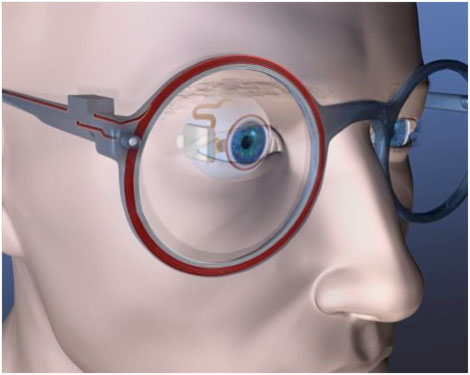Don’t forget to :  Follow us on Twitter or
Follow us on Twitter or  Facebook for updates.
Facebook for updates.
MIT researchers are developing a microchip that will enable a blind person to recognize faces and navigate a room without assistance, helping the blind to regain partial eyesight. The chip, which is encased in titanium to prevent water damage, will be implanted onto a patient’s eyeball. Users are required to wear special glasses fitted with a small camera that transmits images to the titanium-encased chip, which fires an electrode array under the retina that stimulates the optic nerve. The glasses will help to power the coils surrounding the eyeball.

MIT researchers are developing a microchip that could help blind people regain partial eyesight. Though it won't completely restore normal vision, it will enable a blind person to recognize faces and navigate a room without assistance. The chip, which is encased in titanium to prevent water damage, will be implanted onto a patient's eyeball. The patient will then wear a pair of eyeglasses equipped with a tiny camera that transmits images directly to the chip, which in turn sends them to the brain. With any luck, human trials are only a few years away.
MIT researchers are developing a microchip that will enable a blind person to recognize faces and navigate a room without assistance, helping the blind to regain partial eyesight. The chip, which is encased in titanium to prevent water damage, will be implanted onto a patient’s eyeball. Users are required to wear special glasses fitted with a small camera that transmits images to the titanium-encased chip, which fires an electrode array under the retina that stimulates the optic nerve. The glasses will help to power the coils surrounding the eyeball.

MIT researchers are developing a microchip that could help blind people regain partial eyesight. Though it won't completely restore normal vision, it will enable a blind person to recognize faces and navigate a room without assistance. The chip, which is encased in titanium to prevent water damage, will be implanted onto a patient's eyeball. The patient will then wear a pair of eyeglasses equipped with a tiny camera that transmits images directly to the chip, which in turn sends them to the brain. With any luck, human trials are only a few years away.
0 comments:
Post a Comment